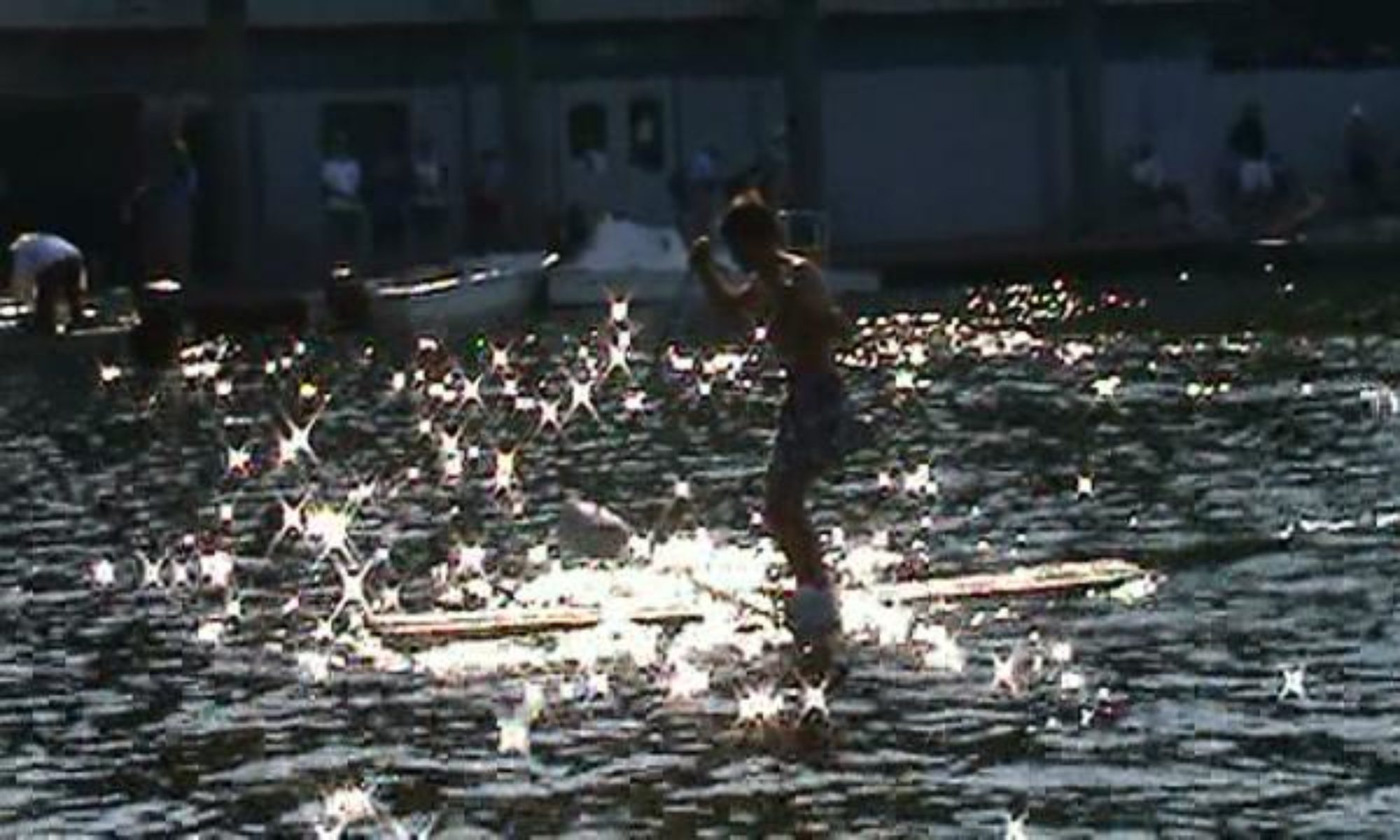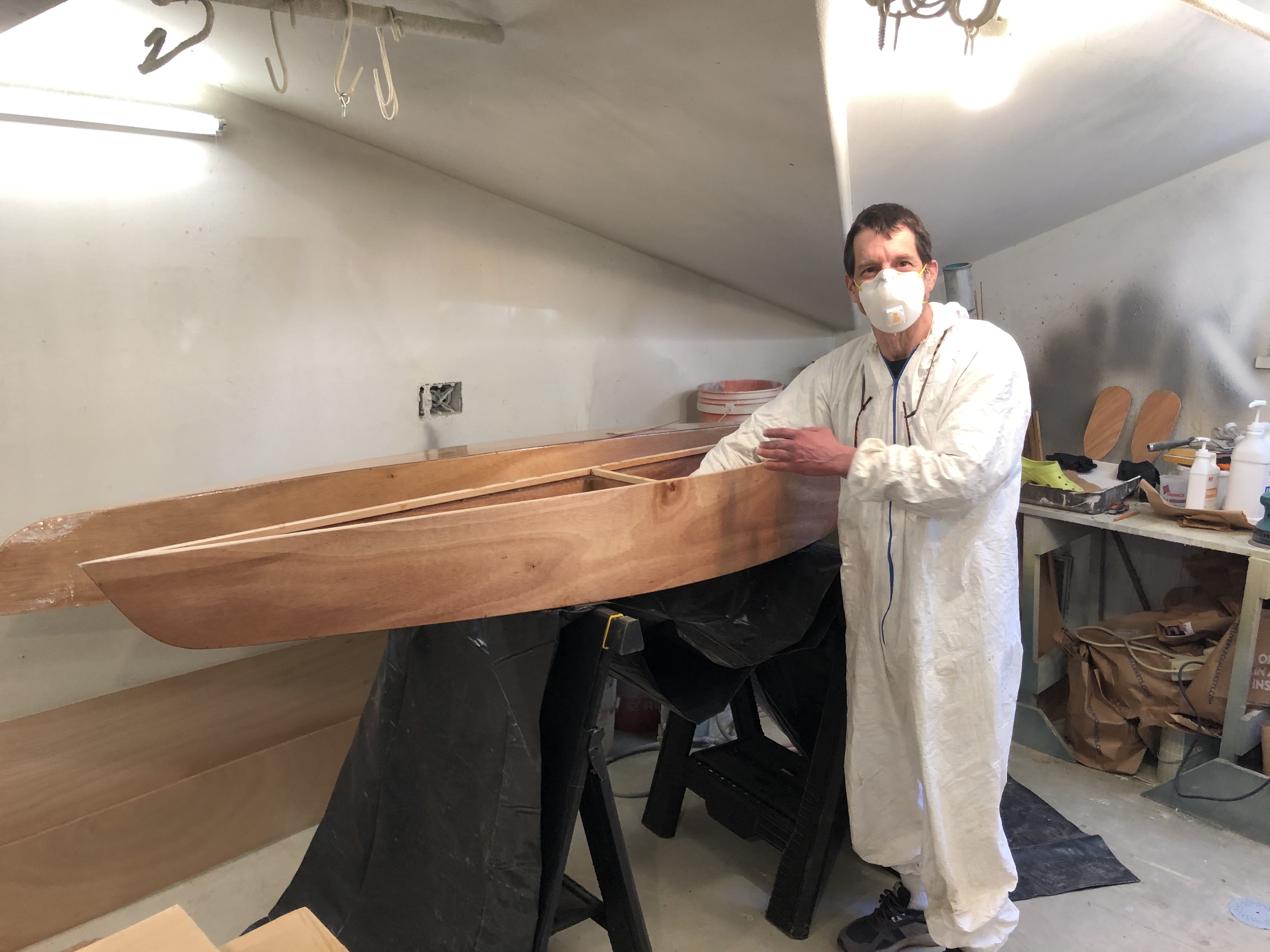
I’ve not posted since getting started in the Karlstrom Associates factory. So much has happened. First, the outsides of the skis have been covered with light weight fiberglass cloth, and then several coats of epoxy. This may not be noticeable from the picture because the fiberglass becomes transparent when coated with epoxy. Since I had to put on several layers of epoxy, the end result was not smooth. I went back to Fisheries Supply and purchased some epoxy based fairing compound. It was reasonably easy to apply, however after it had dried, it was much harder to sand than I had hoped. I ended up burning up my nice Makita random orbital sander and knocked one ski off the saw horses, cracking the ski tip.
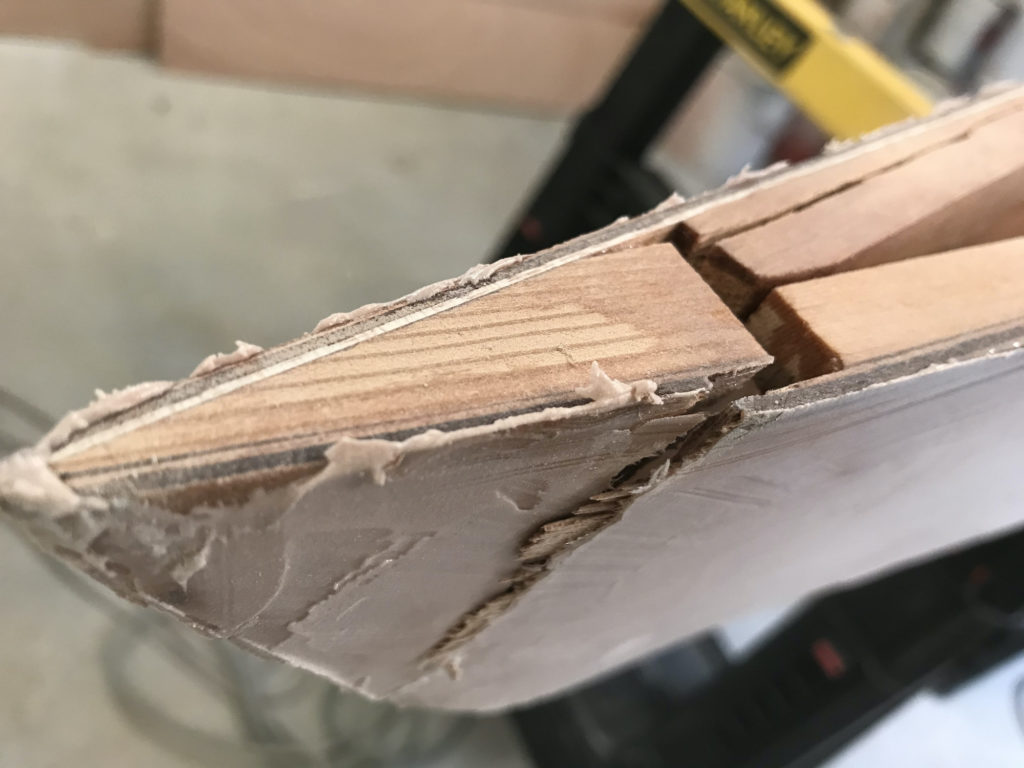
If you have been following my earlier blog posts, you might have noticed that my inwales extend all the way to the tip on the other ski. This was a lot of work so I decided to cut corners on this ski. I thought it would still be strong enough. WRONG! Of course, I didn’t expect to knock the ski off the saw horse.
Another step I completed this month was the “end pours”. This is an important step in stitch-and-glue boat building where you put the ski on end and pour a small quantity of epoxy in to strengthen the tip.
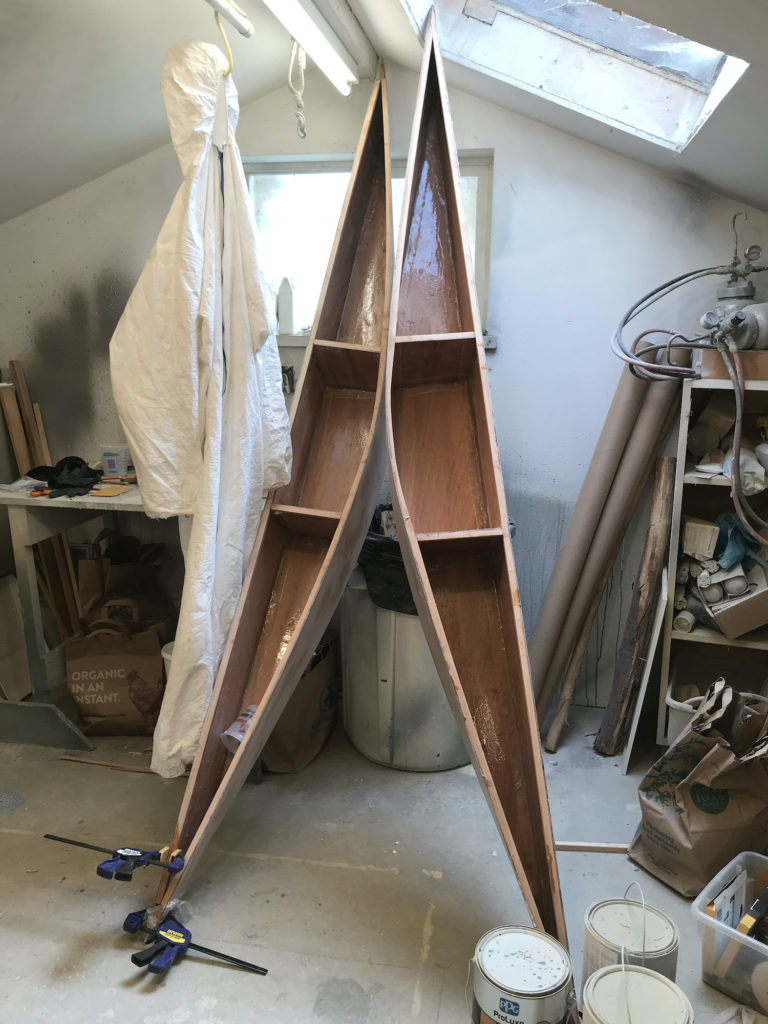
I did this at the same time that I repaired the broken tip. Several things went wrong. First, I mixed up about 12 oz of epoxy. This was already a bad idea because 12 oz of epoxy is 12 oz of weight that I do not want to add. However, before I could pour all of it in, it got hot and started to steam. Epoxy gives off heat as it cures, and it cures faster when it is hot. A larger volume in a cup has less surface area to cool it down. The result was a piping hot chunk of hard epoxy that I placed outside before going home.
When I came back the next day, a tiny amount of epoxy had leaked out of the broken crack. My ski was solidly glued to the floor. Don’t tell Sten that a tiny piece of floor is now attached to my ski tip.
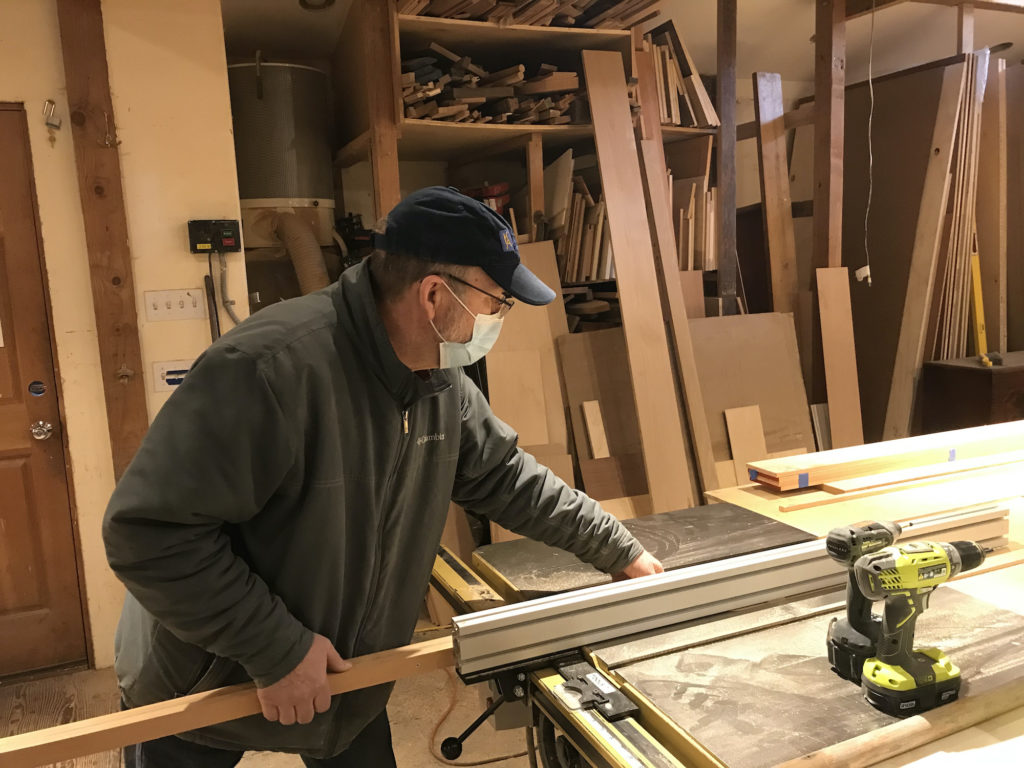
Andy helped me cut slots in my oars for the paddle blades. I’m using this design so that I can easily swap out blades of different sizes and shapes. I will not know what size and shape is best until we test with skiers of different height, weight, and strength. The blades will be clamped into the oars with a couple of bolts with wing nuts.
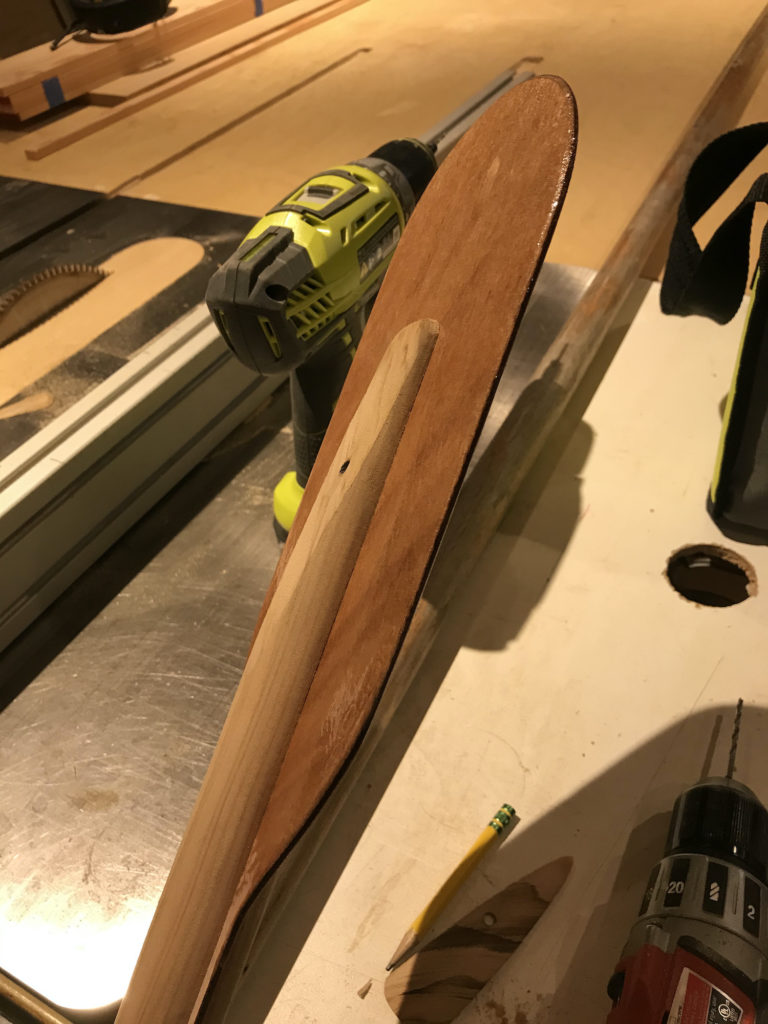
The ends of the oars are feathered to eliminate stress concentration in my 3mm plywood.
